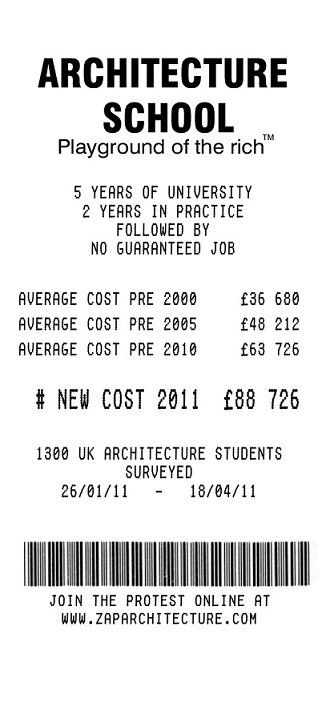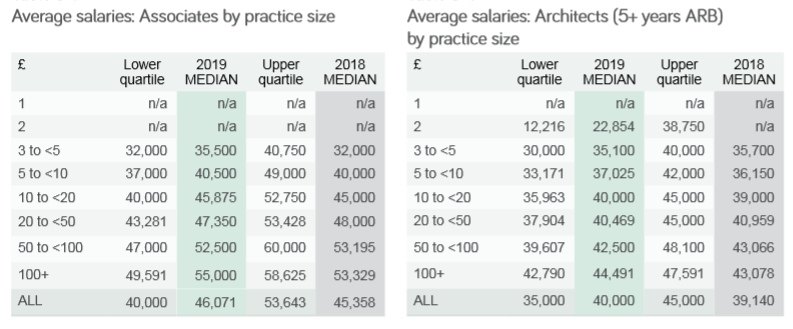“The first rule of Architecture is to be born rich, the second rule is, failing that, to marry wealthy”- Philip Johnson
Although intended to be light-hearted, this quote succeeds in painting a grim picture, which any recent or current student of architecture would be easily able to identify with. Little has changed in repute or reality over the years for this once upon a time considered ‘gentleman’s profession’. Although architects are looked upon with respect and architecture is considered to be the ‘sexiest’ profession; the sad truth is that completing a degree in architecture takes too long and costs quite a hefty sum.
Rising Tuition Fees of Architecture Schools
An independent survey conducted by ZAP architecture, UK, in the year 2011 revealed an estimated average cost of £88,726 for an architectural education post-2011. This has now gone up to £100,000, according to a recent report by the UK Architectural Education Review Group.
In the USA, even after you follow the guide that’ll get you into the architecture school of your interest, the average tuition and fees for undergraduate architecture programs, where public and private tuition costs are combined, go from $19,791 a year (in which in-state schools are included) to $26,252 a year (where out-of-state tuition for public schools is counted). This average cost is roughly equivalent to buying around 50,000 cups of coffee in the local currency! (Yes, that many!)
The conclusion drawn by the UK Architectural Education Review Group report was that future student numbers drawn to the course would be governed by the amount of debt the students are prepared to shoulder. According to this report, the existing requirements would “inhibit wider participation, thus creating an artificial barrier to the architecture profession, and would be based solely on a student’s willingness to accept high levels of personal debt.” The situation in the US is not that different, check below the tuition and fees reported by Architectural Record Magazine in 2013
With all this debt incurred to study architecture, one would imagine some respite for an architect once all the hurdles are cleared and a degree is obtained; however no such luck. It is quite common knowledge that architecture is an extremely poorly paid profession, the same morose scenario all over the world. Most young graduates entering into the field have no guaranteed job, and those who do, have to settle for internships that pay minimum wage, or quite low-paying starting jobs. It doesn’t matter then what school the graduate is from.
Contemporary long duration courses like law and medicine start paying off well almost immediately upon graduation, with better wages in these professions allowing any outstanding debts to be cleared off before a high rate of interest really start to build up. The long duration of the architecture course and mountains of debt also create havoc in the personal lives of these graduates, as they struggle to save enough money to clear the debts while at the same time juggling the additional responsibilities that come with starting a family. Caving into their bleak debt-ridden future, quite a few architecture students drop the course midway in search of professions that would be able to provide a better sense of job security and a more financially sound career. And who would blame them, really?
Echoing these sentiments, Alex Wright, chairman of the UK Architectural Education Review Group, and chair of the School, that represents the heads of architecture schools, said: “There is an urgent need for additional flexibility to suit the needs of students and the profession. The hope is that architecture can continue to attract young people of extraordinary potential and that their education will enable them to develop their ability to maximum effect.”
So what then, could be the proposed solutions to combat this unjust system? According to Wright, one way to cope with rising costs is to either shorten courses or let students carry out their studies alongside paid work. “It’s quite possible people in certain circumstances should qualify quicker or more slowly so they can earn money during the course of their education.” If the course duration is shortened, the loan and interest incurred therewith would drastically decrease, allowing graduates to settle their debts more quickly. Another good option, in case it seems unreasonable to shorten the course length, would be to match the salaries in proportion to the education fee hike.
Every effort needs to be made to ensure that equal opportunities are provided to anyone passionate about Architecture. True talent and creative identity should not go to waste due to reasons of debt. There is plenty of fodder to generate a good discourse. It is time for architects worldwide to raise their voices against this unfair system and fight to bring about some positive change in their beloved field.
BY: Priyanka Shah







